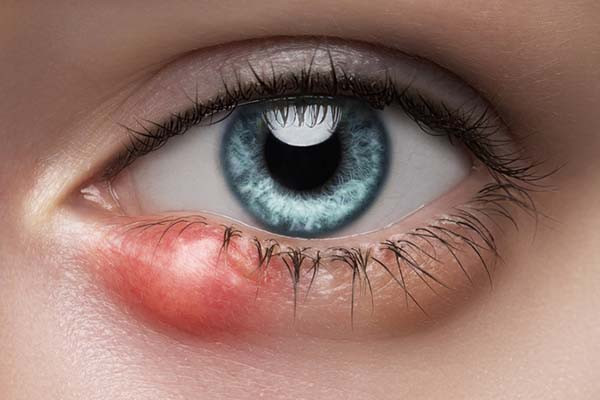Stye treatment
- Reviewed by Howard E. LeWine, MD, Chief Medical Editor, Harvard Health Publishing; Editorial Advisory Board Member, Harvard Health Publishing

Though common and painful, styes are not usually serious, and they don't typically require treatment from a doctor.
What is a stye?
A stye is an inflamed bump on the eyelid that can cause pain, redness, and swelling. It may look like an acne pimple. Styes can cause other symptoms, including:
- a gritty or scratchy sensation in the eye
- sensitivity to light
- tenderness of the affected eyelid
- tearing in the affected eye.
Styes are common, especially in children. The medical term for stye is hordeolum.
What causes styes?
A stye develops when an oil gland of the eyelid or eyelash becomes blocked. Bacteria grow in the blockage, causing an infection. Styes can develop rapidly overnight, or over the course of one or several days.
There are two types of styes:
- Internal styes emerge from an oil-producing gland in your eyelid
- External styes emerge from the hair follicle at the base of your eyelash.
Both internal and external styes are treated the same way.
At-home remedies for styes
A stye may last a week or two and usually goes away on its own, but you can speed the process with a simple home therapy.
At home, you can treat a stye by placing warm compresses over the area, then gently massaging or wiping the eyelid. This helps the stye heal faster by prompting it to open and drain.
To create a warm compress, moisten a clean washcloth with warm water and place it gently over the affected eye. Do this for five minutes several times a day. Make sure to change the washcloth frequently, especially once the stye begins to drain.
If you notice a stye:
- Don't wear eye makeup or contact lenses until the stye has healed.
- Don't attempt to drain a stye by popping it or squeezing out the pus. This could make it worse.
- Don't use any over-the-counter treatments such as eye drops or ointments without talking to your doctor.
Talk to your doctor if you have additional eye symptoms. For example:
- the bump grows in size or bleeds
- the bump affects your vision
- your entire eye, eyelid, or both become red
- the redness or swelling affects other areas of your face, such as your cheek.
Treating styes
If a stye does not start to heal after one week of treatment with warm compresses, you may need to see a doctor. Your doctor may prescribe medication or open and drain the stye by creating a tiny hole in it.
Preventing styes
Styes can be prevented by maintaining good eye hygiene. Avoid rubbing your eyes, and make sure your hands are clean before touching your face and eyes. Make sure to remove all makeup on the face and eyelids before going to sleep. Don't share eye makeup or use old makeup. Replace mascara every two to three months.
If you wear contact lenses, make sure they are properly disinfected with a contact lens cleaning solution. Always wash your hands before inserting or removing contact lenses.
People with certain eye conditions such as blepharitis are more likely to develop styes. If you have blepharitis or have recurring styes, talk to your doctor about how to best manage the condition.
About the Author

Rebecca Kranz, Health Writer
About the Reviewer

Howard E. LeWine, MD, Chief Medical Editor, Harvard Health Publishing; Editorial Advisory Board Member, Harvard Health Publishing
Disclaimer:
As a service to our readers, Harvard Health Publishing provides access to our library of archived content. Please note the date of last review or update on all articles.
No content on this site, regardless of date, should ever be used as a substitute for direct medical advice from your doctor or other qualified clinician.















